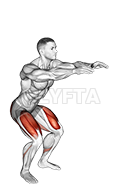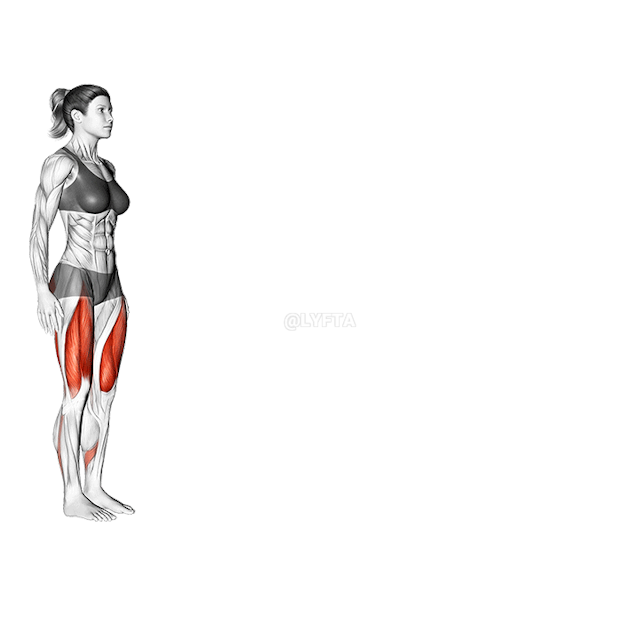
Squat
Exercise Profile
Related Exercises:
Introduction to the Squat
The squat is a comprehensive lower body exercise that targets several muscle groups including the quadriceps, hamstrings, and glutes, offering benefits such as improved strength, flexibility, and balance. This versatile exercise is suitable for individuals at all fitness levels, from beginners to advanced athletes, due to its modifiable difficulty and form. People might choose to incorporate squats into their workout regimen for a variety of reasons, including enhancing athletic performance, promoting weight loss, or simply improving overall physical fitness.
Performing the: A Step-by-Step Tutorial Squat
- Begin the movement by engaging your core, pushing your hips back and bending your knees as though you're sitting back into a chair.
- Lower your body as far as you can by pushing your hips back and bending your knees, keeping your back straight and your chest up.
- Pause at the bottom of the squat, ensuring your thighs are parallel to the ground or lower if your flexibility allows.
- Push back up to the starting position, driving through your heels and keeping your chest up and back straight.
Tips for Performing Squat
- **Depth of Squat**: Aim to lower your body until your thighs are parallel with the floor. This ensures you're engaging your glutes and hamstrings fully as well as your quadriceps. Common Mistake: Not squatting deep enough. Partial squats can put extra stress on your knees and do not fully engage the lower body muscles.
- **Core Engagement**: Engage your core throughout the entire movement. This helps maintain your balance and
Squat FAQs
Can beginners do the Squat?
Yes, beginners can definitely do the squat exercise. It's a fundamental movement that works out the lower body, particularly the thighs, hips, buttocks, quads and hamstrings. However, it's important for beginners to start with proper form to avoid injury. They should start with bodyweight squats before adding any additional weights. If unsure, it's always beneficial to seek guidance from a fitness professional.
What are common variations of the Squat?
- Jump Squat: This is a high-intensity squat variation where you jump explosively from the squat position.
- Sumo Squat: In this variation, you stand with your feet wider than hip-width apart and your toes pointed slightly outward, then squat down.
- Front Squat: This squat variation involves holding a barbell in front of your body at shoulder height, then performing the squat.
- Split Squat: Also known as a Bulgarian split squat, this variation involves placing one foot behind you on a raised surface and squatting down with the front leg.
What are good complementing exercises for the Squat?
- Deadlifts: Deadlifts complement squats by working on similar muscle groups, including the glutes, hamstrings, and lower back, but they place more emphasis on the posterior chain, providing a balanced strength training approach.
- Calf raises: While squats primarily target your thighs and glutes, calf raises can strengthen the lower leg muscles, improving overall leg strength and stability which can enhance your squat performance.
Related keywords for Squat
- Bodyweight squat exercise
- Quadriceps workout
- Thigh strengthening exercises
- Bodyweight exercises for legs
- Squats for thigh muscle
- Leg workout at home
- No equipment quadriceps exercise
- Strengthening thighs with squats
- Bodyweight workout for quads
- Squat exercises for leg muscles











